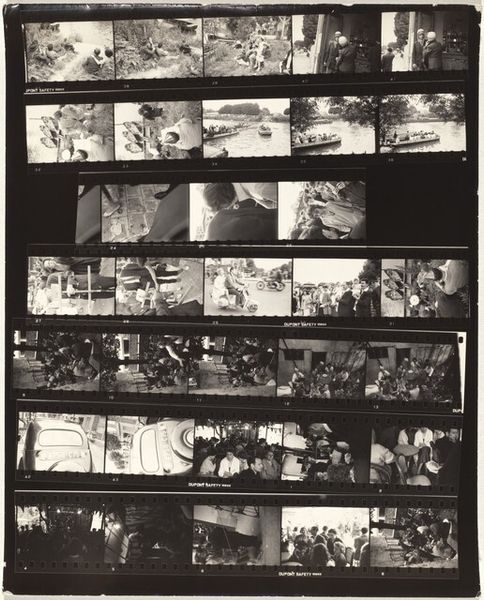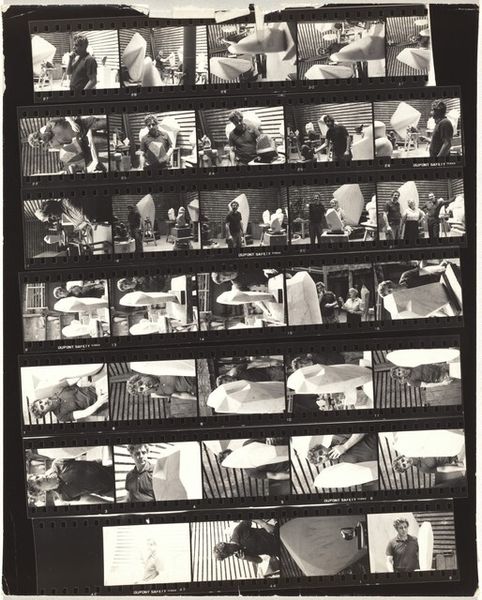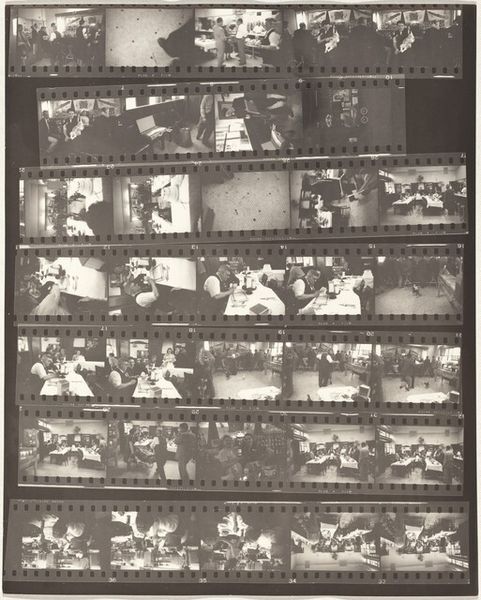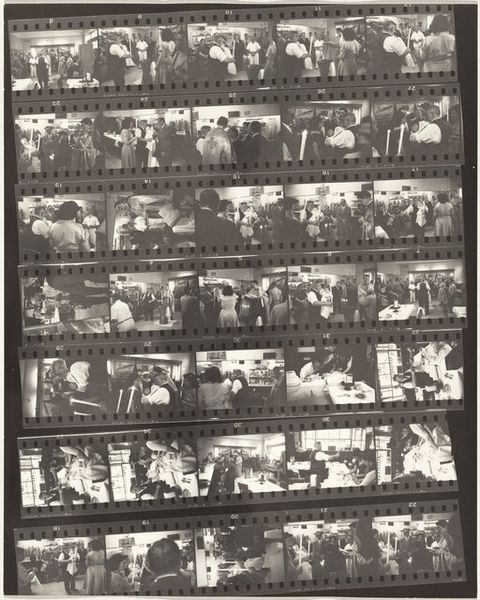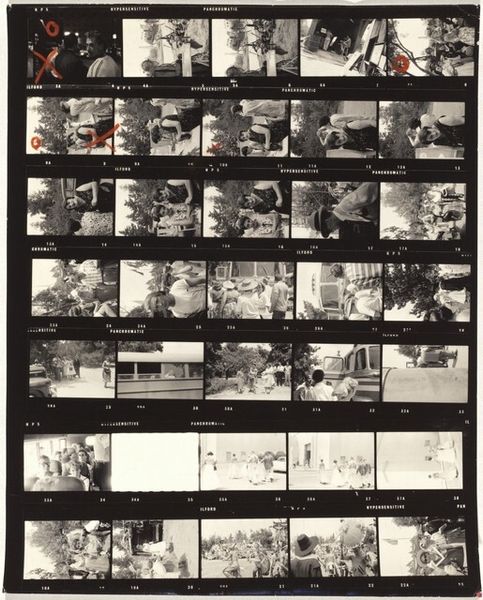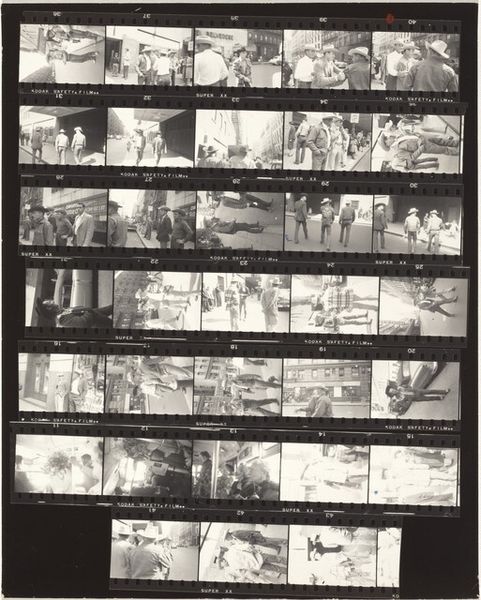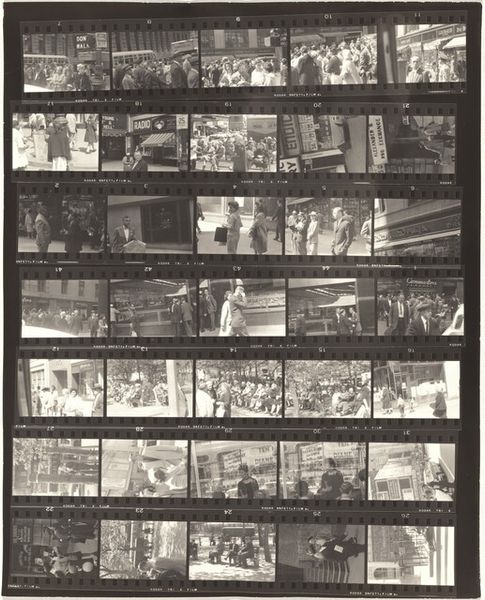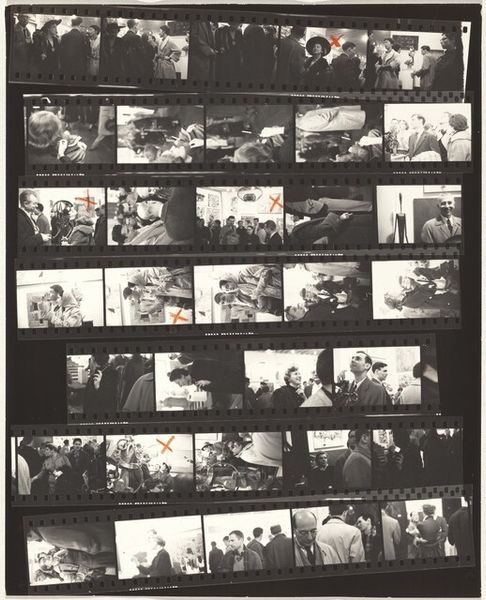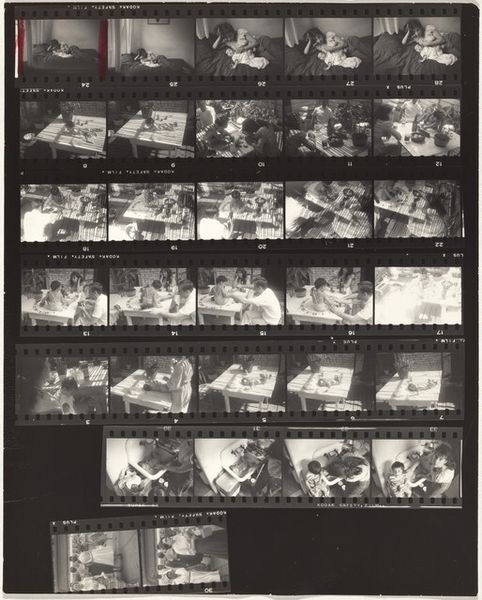
Dimensions: sheet: 20.2 x 25.2 cm (7 15/16 x 9 15/16 in.)
Copyright: National Gallery of Art: CC0 1.0
Curator: This gelatin-silver print is titled "Embarkation 6," made by Robert Frank in 1957. The composition strikes me immediately—the starkness of the black and white really heightens the granular texture of the multiple frames on this roll of film. What’s your first take on this image? Editor: There’s a frenetic energy to it. This is photography that doesn't shy away from depicting a world in motion, yet I want to decode some of this seemingly chaotic and fragmented moment, and I can't help but try to figure out the social landscape surrounding Frank's vision. Curator: I appreciate your framing of this as 'Frank's vision' because understanding the artist's social milieu informs much of my response to the image itself. This photo was made during the postwar era, in a context of rapid cultural shifts, not to mention that he himself was an immigrant experiencing and witnessing America from an outsider's point of view. Editor: Exactly, Robert Frank sought to capture the raw, unfiltered experiences of everyday life, reflecting both the allure and the alienation he found in the United States at the time. I feel that alienation deeply from his specific choices and techniques here. His decision to leave the filmstrip complete, and untouched, rather than selecting a single perfect image to present, seems incredibly potent and deliberate. Curator: Yes! The decision to reveal an entire roll forces us, I think, to interpret it as a narrative. Perhaps about labor, commerce, and consumerism? Editor: Perhaps it even symbolizes a critique of that same consumerism that alienates subjects by denying them personal identity? Look at all of these boxes. Are they things that give identity, or do they obscure it? Even Frank's choice of photography—a readily mass-produced medium—becomes deeply interwoven with ideas of individual worth and visibility. Curator: Ultimately, this single artifact spurs broader conversations, about Frank's body of work, certainly, but also about the social dynamics that underpin American identity at a pivotal point in the mid-20th century. Editor: Absolutely. It urges us to reconsider how the politics of representation shape perceptions and lived experiences within society and through that knowledge to gain clarity and change today.
Comments
No comments
Be the first to comment and join the conversation on the ultimate creative platform.
